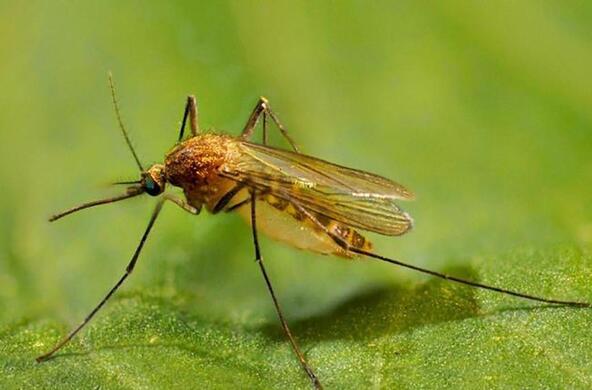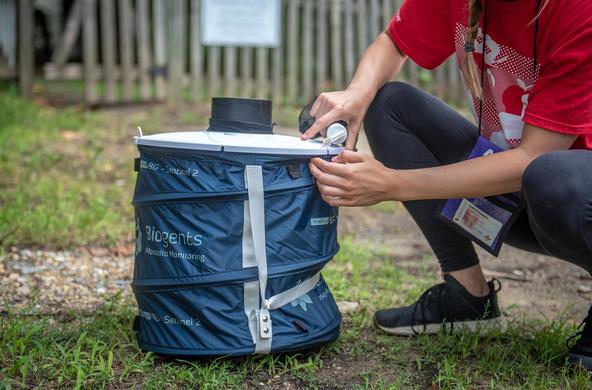Shannon LaDeau is a disease ecologist at Cary Institute. For over a decade, she has explored mosquito ecology, to better understand how environmental and social factors influence mosquito-borne disease risk for people. Here, LaDeau discusses her latest mosquito research, with fieldwork centered in Baltimore, Maryland.
How did mosquitoes come to be a problem in cities?
Climate change and invasive species have made the problem worse. The invasive tiger mosquito (Aedes albopictus) has eggs that can survive out of water for months. It arrived at US ports hidden in tires imported from Southeast Asia. In addition to changing climate, urban heat islands make it easier for mosquitoes to survive winter and multiply rapidly.
Do different mosquito species transmit different diseases?
Mosquito feeding preferences vary among species, and the animals they choose to bite carry distinct pathogen loads. For example, West Nile virus circulates in birds and is transmitted to people by Culex mosquitoes. West Nile won’t be a risk to people unless there are Culex mosquitoes that bite birds. Zika, on the other hand, is spread primarily by Aedes mosquitoes. Mosquitoes will only become infected with Zika – with potential to transmit – if they bite an infected person.
In Baltimore, we are identifying which mosquito species live where, what animals they bite, and how this shapes residents' risk of contracting a mosquito-borne disease.
Where do you find high mosquito numbers?
Mosquitoes need water to breed and many don’t fly far. City blocks with more ‘water habitat’ have more mosquitoes. This can include everything from bottle caps to abandoned tires – anything that can collect and contain water. More juvenile mosquitoes means there will be more adults looking for blood meals.
We find higher mosquito numbers in neighborhoods where legacies of racialized disinvestment in infrastructure coincide with high residential abandonment, unmanaged vegetation, and illegal garbage dumping.
What is the status of mosquito species diversity in Baltimore?
Looking at differences in mosquito populations from rural to urban settings, we are finding that mosquito diversity is lower in more developed areas. Unfortunately, the species that thrive in cities tend to be those that prefer to bite people.
How is changing climate affecting mosquitoes, and what does this mean for disease risk?
Urban landscapes ‘blur’ the natural rhythms – like water availability and frost-thaw cycles – that control mosquito numbers. Paired with shorter winters, mosquitoes enjoy a longer growing season in cities. This allows populations to get really large. Longer seasons mean there is more time for pathogens to build up in the community – meaning greater risk of infection among mosquitoes and everything they bite.
What solutions might reduce mosquito-borne disease risk for city residents?
Residents can help reduce mosquito habitat by removing sources of standing water, like bird baths and non-draining potted plants. However, this is only effective in neighborhoods where all yards can be actively managed. Vacant land and abandoned buildings are mosquito breeding hotspots; city investment in managing these spaces is critical. Mosquitoes fly, after all, so people living in an impeccably managed home next to an abandoned one will likely encounter biting neighbors.
At the same time, replacing abandoned buildings with new development or green space can cause problems, so it’s important to consider unintended outcomes. By blending research on mosquito ecology with social and demographic factors, we are aiming to develop strategies to reduce mosquito risk while keeping residents’ needs and voices at the fore.
What are you looking at next?
A new project is exploring the effects of plants on mosquito population growth. Juvenile mosquitoes feed on plant matter, which differs dramatically between vacant and highly managed land. We know that adult mosquitoes are bigger on city blocks with more abandoned land. We want to know whether the type of plants feeding young mosquitoes impacts body size – which is connected to fitness, reproductive ability, and disease transmission. Bigger mosquitoes pose a higher risk to people.





